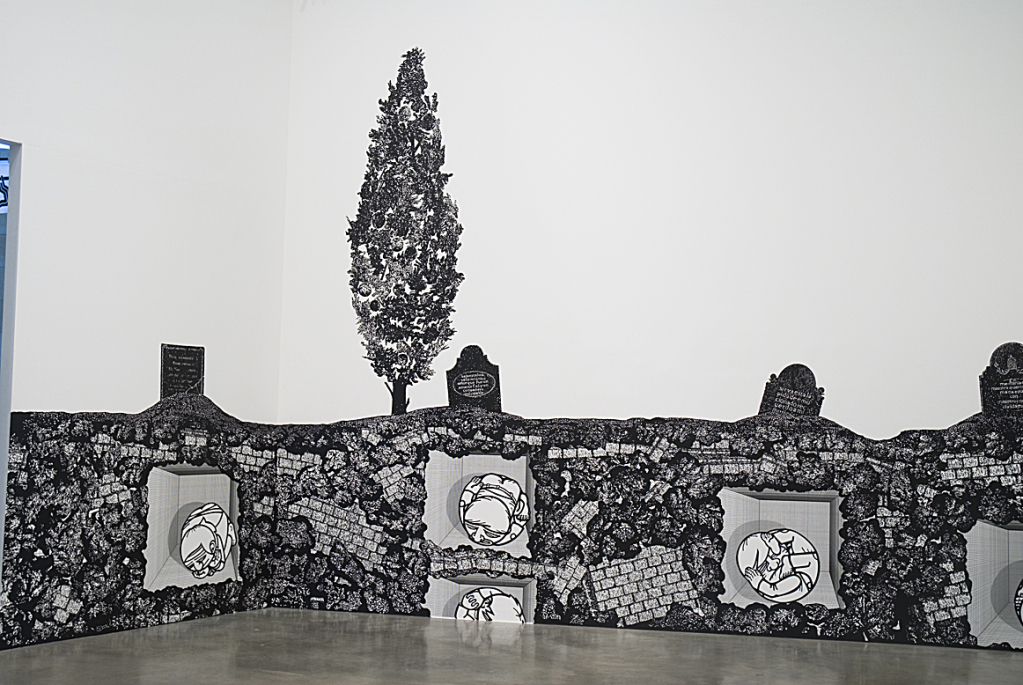Chacun à son goût
10.17.2007 - 02.01.2008
The twelve selected artists—Elssie Ansareo, Ibon Aranberri, Manu Arregui, Clemente Bernad, Abigail Lazkoz, Maider López, Asier Mendizabal, Itziar Okariz, Aitor Ortiz, Juan Pérez Agirregoikoa, Sergio Prego, and Ixone Sádaba—are part of a generation that began to make its way in the world in the late nineties and that uses international art idioms to respond to the complexities of their local milieu.
Curated by Rosa Martínez, Chacun à son goût presents a selection of contemporary Basque artists who have all produced new projects for the museum.
Taken from Diderot ("to each their own"), the title of the exhibition champions individual taste and freedom of choice. As a phenomenon relative to perception and time, taste may evolve according to social and individual preferences, and is influenced by class, gender, geopolitics, and aesthetic education. Every new artwork, every new exercise in interpretation contributes new perspectives to the public’s reservoir of tastes and values.
On the evidence of this show, sculpture today is shifting from heavyweight to lighter materials, drawing is still very much alive, and photography and video are now the preferred media for contemporary expression. Performance and staging, where the artists either use their own bodies in relation to the landscape or relate the work in question to the architecture around it, are clearly essential resources for exploring current tensions.
Elssie Ansareo’s La Danse des Flâneuses (2007) is a large photographic mural that dramatizes identity and otherness, situating familiar imagery alongside a gallery of phantasmagorical characters. The presence of the figures in a neutral environment creates a timeless genealogy that subverts social hierarchies of origin and status.
Horizons (Horizontes, 2001–07) is a series of bright pennants by Ibon Aranberri that zigzag from the museum ceiling, recycling and modifying Chillida’s graphic and sculptural legacy. In an ironic linguistic operation, cultural and political icons and anagrams are reconfigured to playfully demystify symbolism and memory.
In his latest film, Disarmingly Cute (Irresistiblemente Bonito, 2007), Manu Arregui explores the physical and psychological transformation of Vanesa Jiménez, known as "the glass girl" due to a degenerative illness, to question the concept of hyper-reality and the ethics of TV reporting.
Clemente Bernard uses photography as a social document in series that are either commissioned, such as Caracas (2003–04), about a strike against Chavez’s government, and Mecca (La Meca, 2005–06), about an old people’s home; or the result of his own inspiration, such as Day Laborers (Jornaleros, 1987–92), Basque Chronicles (1997–2001), and Open Tombs (A tumba abierta, 2001), a report on extreme left-wing Turkish prisoners.
Abigail Lazkoz's black-and-white drawings double as a kind of restrained, synthetic writing in 130,000 Years of Last Tendencies (2007), a large mural work that alludes to the art industry’s obsession with fashion and novelty, while recalling burial rites as a form of anthropological culture.
Maider López’s work arises from a dialogue between art, design, and architecture. In her work, she returns to the concept of spatial geometry to work an ironic, chameleonic transformation on one of the museum’s more classically designed galleries. By turning it into a "Frank Gehry gallery," the artist borrows the architect’s signature style to question notions of authorship.
In Nom de guerre (2007), Asier Mendizabal takes an apparent ready-made from an incident of street violence: a can that burns away on a concrete block like an urban joss-stick holder. In the limpid context of the museum building, the flames act as a sign of social angst, questioning both notions of control and the commemorative function of sculpture.
This Community Accepts Propaganda (Esta comunidad admite propaganda) and Have You Given in to Your Desire to Master? (¿Habéis cedido a vuestro deseo de amo?) are sentences Juan Pérez Agirregoikoa inscribes on placards to signify social urges. Some of them are to be found in Project Turned into Installation (Proyecto convertido en instalación, 2007), fixed to a sports hurdle. Here, as in his biting watercolors of the Orfeón Donostiarra choir (1997–2004), the underlying question is whether revolution is still possible.
With Irrintzi (2007), an action shot on video, Itziar Okariz moves around the museum emitting irrintzis, an ancestral Basque shout or cry. This tour in sound apprehends the space physically and semantically in a play of contrasts between remote signifiers, such as the traditional connotations of the irrintzi and the spectacular modernity of the Guggenheim Bilbao.
Aitor Ortiz's Y (2007) combines a series of photographic panels with a real opening in the wall of the museum’s gallery 304. The work explores our phenomenological perception of architecture and the lines between sculpture and photographic representation, while bringing the spectator’s capacity to perceive reality objectively into play.
The concept of sculpture as intervention rather than merely object has led Sergio Prego to install Sequence of Dihedrals (Secuencia de diedros, 2007) in the courtain walls of the museum Atrium. Although the title appears to be a simple allusion to geometrical abstraction, the work is in fact a genuine sculptural and conceptual challenge to the spaces involved and the actual function of art in a museum.
Ixone Sádaba explores issues of identity by splitting her own image, organizing theatrical dance routines in sublime, apocalyptic landscapes. Poétique de la disparition (2006) and Leviathan (2007) are two photo series in which intimate or atmospheric turbulence becomes a metaphor for a tragic, contemporary dysfunction.
What makes the subtle complexities of the works in Chacun à son goût vibrate is the dialogue between personal vision and current taste. The artists have spared no efforts to update attitudes and idioms, offering the public major ideas for social, intellectual, and aesthetic debate.
Abigail Lazkoz
130,000 Years of Last Tendencies), 2006–07 (detail)
Mural painting. Acrylic on wall, site-specific dimensions
Installation view, Chacun à son goût, gallery 301
Guggenheim Bilbao Museoa

